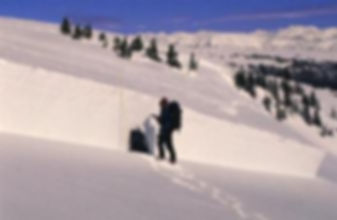Applied Snow and Avalanche Research at the University of Calgary (ASARC)
After the ucalgary.ca/asarc website was taken down in 2021, selected content was moved to this page
ASARC's R & D goal:
Improved methods for forecasting, assessing, mitigating and mapping snow avalanche risk.
Asarc field studies finished in Spring 2014. The principal investigator, Bruce Jamieson, retired in August 2015. The last Asarc paper was published in 2017. This page is maintained to provide access to selected research results.

History
The avalanche research program started at the University of Calgary in 1987. Studies included:
-
properties of persistent and non-persistent weak layers,
-
strength of snow slabs and fracture propagation,
-
refinement and limitations of the rutschblock test,
-
refinement of shear frame stability indices for skier triggering,
-
correlations of shear frame, compression and rutschblock results with skier triggering of persistent slabs,
-
improved probing for avalanche victims,
-
micro-mechanical model of strength changes of surface hoar,
-
skier triggering, including triggering from isolated weaknesses,
-
spatial variability of snow stability,
-
fracture in weak snowpack layers.
Field studies were conducted at:
-
Lake Louise and Kananaskis Country, 1987-89
-
Cariboos and Monashees near Blue River, BC, 1989-2014
-
Banff National Park, 1988-1995
-
Kootenay Pass, 1992-94
-
Jasper National Park, 1992-95
-
Yoho National Park, 1992-95
-
Bobby Burns Lodge, Purcell Mountains, 1992-1998
-
Rogers Pass in Glacier National Park, 1992-2014
From 1989 to 2014, field work was carried out in cooperation with helicopter and snowcat skiing operators in western Canada.
Our Clients







